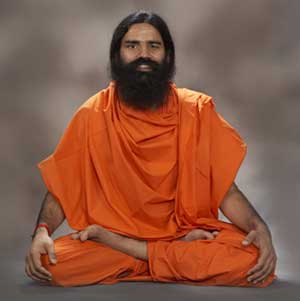Bhajan Kirtan
Bhajan Kirtan
By Hetal Patel
For millennia Hindu mandirs (temples) have been centers of Bhajan-Kirtan-Bhakti. the tradition of singing Bhajan-Kirtan flourished with the contributions of medieval saint-poets of the Bhakti movement

For millennia Hindu mandirs (temples) have been centers of Bhajan-Kirtan-Bhakti. the tradition of singing Bhajan-Kirtan flourished with the contributions of medieval saint-poets of the Bhakti movement like, Tulsidas, Kabir, Raidas, Narsinh Mehta, Surdas, Kumbhandas, Mirabai and later, Tyagaraja, Premanand Swami, Brahmanand Swami, Muktanand Swami and many others. On singing and listening to their Bhajan one not only sways to the notes and rhythms, but becomes absorbed in a beauty and glory of God's lila. The devout sing kirtan and thus communicate with Divine: praising, petitioning, confessing and praying.
Kirtan means to sing God's glory and greatness with profound devotion. Since God is the repository of all virtues, beauty and greatness the devout sign his lila and glory. The combination of musical notes, bhav and lyrics in kirtan evoke soul-stirring vibration of devotion and joy.
The ancient rishis of India mellifluously chanted mantras in praise of the supreme God and devas.

The tradition of singing kirtans followed in thereafter with notable contributions from medieval saint-poets of the Mehta, Surdas, Kumbhands, Mirabai and many others. The rich poetic content of their kirtans or bhajans and their bhav are par-excellence. On listening to their bhajan one not only sways to the notes and rhythms, but becomes absorbed in the description of God's lila, beauty and glory. the Bhagvatam prescribes Kalau tad dherikirtanat - (liberation) is attained in Kaliyug by kirtan bhakti.
For milennia Hindu mandirs have been the patrons and centers of kirtan-bhakti. The singing of kirtans beneath the mandir dome produces a devotional ambience and bhav. The devout sing kirtans and thus communicate with the deity: praising, petitioning, confessing and praying.
Help. Did you like this website or this article. We are non profit website, Please help keep 14Gaam online
infoSpiritual Healing & Rituals
Note. Want to contribute or share your views/thoughts in form of Article? Feel free to Add your articles or email to us at [email protected]
info-
-
The Secret Book Read Online Download
| 46146 views | -
Pranam
| 41230 views | -
Mandir Ritual
| 49252 views | -
Dhyan Meditations
| 23168 views | -
What is Shankh (Conch)? Benefits of Shankh (Conch) Sound
| 26179 views | -
Death rituals the month of Bhadrapad and Shraddha
| 12274 views | -
Naam Jap - Nam Jap
| 28539 views | -
Seva
| 6451 views | -
Guru Pujan
| 6547 views | -
Hanuman Chalisha in Hindi
| 15059 views | -
BAPS Swaminarayan Temple in USA
| 14265 views | -
માળા એટલે શું ? તેમાં 108 મણકા કેમ રખાય છે ?
| 7690 views | -
Ayurveda and Yoga - Two Inseparable Sisters
| 5649 views | -
Vedic Puja - Hindu Rituals
| 9158 views | -
Darshan
| 12175 views | -
Arti
| 21130 views | -
Thal
| 15257 views | -
What is Mantra and why we chant the mantra
| 10644 views | -
Kirtan
| 13282 views | -
Katha
| 6446 views | -
Antardrashti
| 6387 views |














Recent Comments